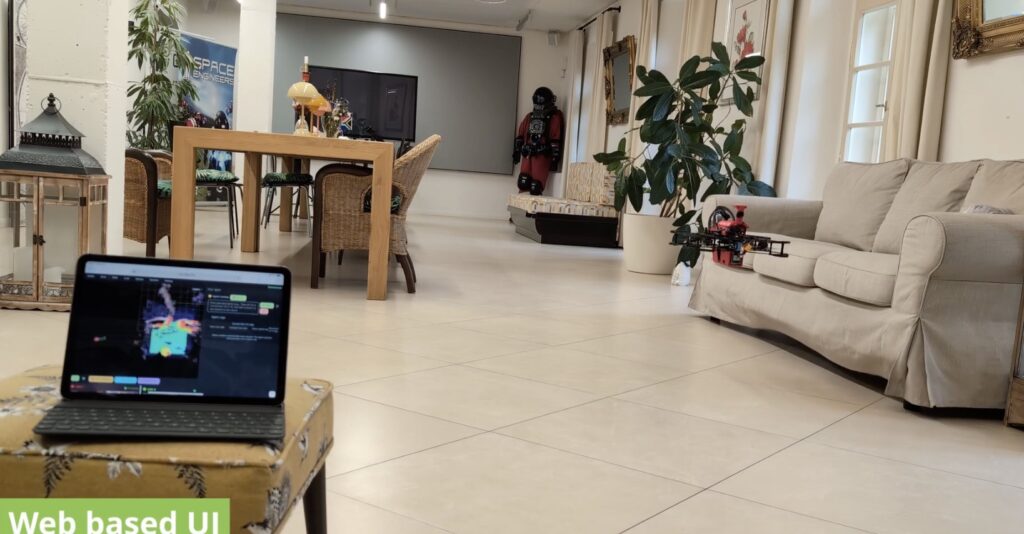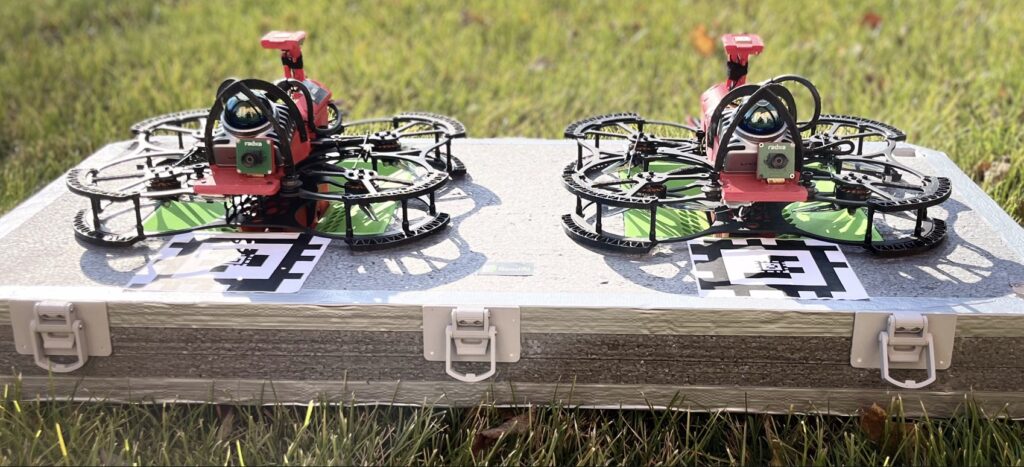How Prometheus is redefining aerial autonomy with onboard LLMs, swarm intelligence, and the ability to fly where GPS goes to die.
- True Autonomy in Dead Zones: Unlike standard drones that fail without signals, Prometheus utilizes onboard foundation models to fly, map, and reason in GPS-denied environments without pilots or external compute.
- Intent-Based Command: Operators no longer “fly” or program missions; they simply state natural language goals like “Search the second floor,” and the swarm coordinates the execution and reporting.
- Sovereign Swarm Intelligence: Built in Europe to ensure strategic independence, this full-stack solution enables 24/7 operations through self-charging docks and peer-to-peer coordination, turning individual units into a cohesive, intelligent team.
In the current landscape of aerial robotics, a drone is only as good as its connection. When GPS drops, radios die, or a pilot cannot physically enter a hazardous space, the most sophisticated hardware on the market turns into what GoodAI Swarm Robotics calls an “expensive ceiling fan.” It hovers, drifts, or crashes. Prometheus was built to do the opposite.
We are witnessing a paradigm shift from remote-controlled cameras to fully autonomous agents. Prometheus represents a new class of drone that does not rely on a human holding a controller or a satellite beaming down coordinates. Instead, it relies on “Autonomous Intelligence.” By integrating Large Language Models (LLMs) directly into the flight loop, these drones possess the ability to perceive, reason, and act in complex, unpredictable environments where traditional technology goes dark.

Intelligence as the Architecture
The core philosophy behind Prometheus is “LLM First.” Intelligence is not a bolt-on feature added to a standard flight controller; it is the architecture itself. Each drone runs an onboard foundation model that fuses perception, mapping, and planning.
This allows for open-domain reasoning. A Prometheus drone doesn’t just see pixels; it understands space. It can navigate smoke-filled corridors, avoid glass obstacles, and build 3D point clouds in real-time. Because the compute is onboard, the drone is immune to signal jamming or connection loss. It flies, thinks, and returns home entirely on its own.
From Programming to Conversation
Perhaps the most radical change Prometheus introduces is the user interface. Historically, autonomous missions required complex waypoint programming or skilled manual piloting. Prometheus replaces the joystick with natural language.
Operators do not “program” a mission; they state an intent. A firefighter or rescue coordinator can simply say, “Search the second floor,” “Map the west wing,” or “Find the electrical panels and any trapped persons.” The drone translates this intent into action. Upon returning, the interaction remains conversational. The operator can speak to the onboard LLM to review the mission, asking specific questions like, “Show me all heat sources and blocked exits.” The drone explains its reasoning and findings in plain language, effectively acting as a debriefing partner rather than a data dump.

The Swarm Advantage: 24/7 Operations
Prometheus is designed “Swarm First.” In traditional setups, one pilot controls one drone. In the Prometheus ecosystem, coordination emerges from the drones themselves. They share maps and intent peer-to-peer, without routing through a vulnerable central controller.
This architecture enables continuous, 24/7 operations. Drones launch from self-charging docks, execute their objectives, and return to charge when their batteries run low, automatically handing off tasks to fresh units. This allows for persistent surveillance or search and rescue (SAR) operations without human intervention for battery swaps. The swarm divides the work intelligently—splitting up to cover more ground, relaying information across long distances, and ensuring that complex tasks are handled as a team.
Strategic Sovereignty and Future Scalability
Beyond the technical specifications, Prometheus represents a strategic play for European technological sovereignty. In a market dominated by closed ecosystems like DJI, GoodAI Swarm Robotics controls the full stack—from the custom airframes and autonomy software to the AI agents. This allows for rapid iteration and ensures that critical infrastructure and defense logistics are not reliant on foreign tech.
While the company currently ships its own reference hardware—cost-optimized and reliability-obsessed—the long-term vision is broader. Prometheus aims to become the “Swarm OS” for the robotics industry. The software stack is hardware-agnostic, meaning this high-level intelligence could eventually pilot legged robots, wheeled rovers, or third-party drones.

The Era of the Teammate
The deployment scenario for Prometheus is stark and compelling: A briefcase dock is placed at an unknown, GPS-denied disaster site. A swarm launches, navigating tight corridors and smoke. They build a live 3D map, identifying hazards and victims. They return, dock, and tell the human operator exactly what they found.
This is the moment drones stop being tools and start being teammates. By combining robust SLAM (Simultaneous Localization and Mapping) with the reasoning power of LLMs, Prometheus is not just building a better drone; it is building a sovereign capability that saves lives when the lights go out.

